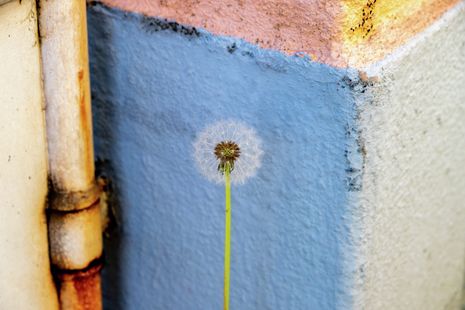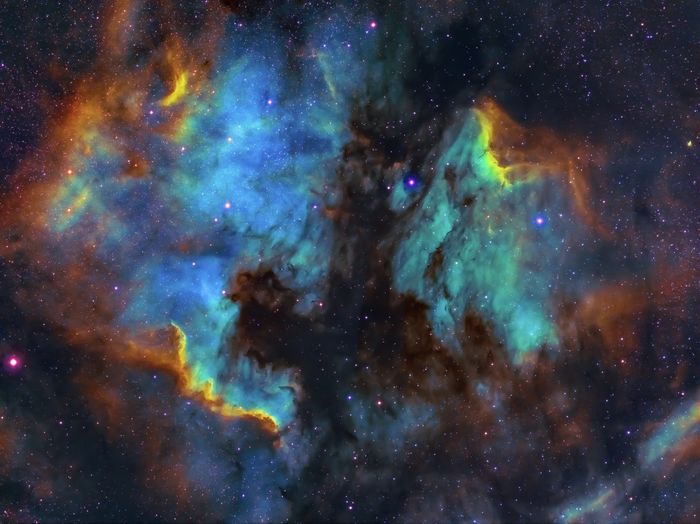The science of dandelions is real-life magic
Alessandra Rey explores the science of dandelions, delving into their symbolism and magical associations

T
The beauty of nature can mystify, truly emanating a feeling of magic. For me, the enchanting beauty of nature is shown by the dandelion. The human-imposed magic entwined with wishing on a dandelion is entrancing. After reading an article entitled ‘Scientists discover that dandelion seeds are basically magic’, I found out that the science of how they work is quite fascinating as well.
Bristles attached to each dandelion seed allow the plant to stay aloft with an entirely unique type of flight. The bristles of dandelions create ring-shaped air bubbles called ‘separated vortex rings’ which increase the drag on each seed so that they can be caught by the wind and carried for long distances. The separated vortex ring is detached from the dandelion bristles and is stabilized by air flowing through it. This is critical for keeping the bubble stable so that the seed can remain afloat.
Upon a cursory glance, dandelions can represent the return of life and rebirth. The symbolism of dandelions is reinforced by their medicinal applications. They are often found in herbal teas and supplements and are used as a natural remedy. Dandelions can help support blood sugar management and have positive health effects for the skin, liver, and heart.
"In every way, they are survivors"
Moreover, I read that the dandelion represents three celestial bodies during different phases of its life cycle – the sun, moon, and stars. Its yellow represents the sun, the fluttering seeds resemble stars, and when it appears as a ‘puff ball’, it resembles the moon. The flower is associated with wishing, hope and optimism. The Greeks saw the plant as a source of strength and power and Theseus ate Dandelions for 30 days to prepare for his battle with the Minotaur. They also appear in witchcraft, symbolising warmth, healing and strength for ritual magic.
Furthermore, their name comes from the French ‘dent de lion’, which translates to ‘lion’s tooth’. The dandelion certainly lives up to its macho etymology, as it is able to remain admirably strong in the face of nature’s adversity. Dandelions truly are ‘masters of survival’ as their leaves can penetrate cement and thrive in barren habitats. Their vortex ring adjusts its morphology depending on the moisture in the air. This means that the plume of seeds can close up and reduce the chances that it separates from the stem, and waits for the best conditions to maximise dispersal and germination. In every way, they are survivors.
Dandelions are also fast growers that go from bud to seed in days. Their lifespan is long, and they can live for up to 13 years. Once the plants take root, they are nearly impossible to eliminate as they can develop roots that go down up to 15 feet. Dandelion roots can clone when divided and one-inch of a dandelion root can grow a whole new dandelion. In every way, they are survivors.
There is something entrancing, magical and beautiful about dandelions. With dandelions’ impressive intricacy, it is hard not to be drawn to them. They are strong and bold, delicate and soft. They host scientific and biological complexity and offer artistic and folklorian symbolism. Science meets art, art meets science, and a magical dandelion grows out of this enchanting world.
 Comment / Plastic pubs: the problem with Cambridge alehouses 5 January 2026
Comment / Plastic pubs: the problem with Cambridge alehouses 5 January 2026 News / Uni-linked firms rank among Cambridgeshire’s largest7 January 2026
News / Uni-linked firms rank among Cambridgeshire’s largest7 January 2026 News / New movement ‘Cambridge is Chopped’ launched to fight against hate crime7 January 2026
News / New movement ‘Cambridge is Chopped’ launched to fight against hate crime7 January 2026 News / SU stops offering student discounts8 January 2026
News / SU stops offering student discounts8 January 2026 News / Cambridge businesses concerned infrastructure delays will hurt growth5 January 2026
News / Cambridge businesses concerned infrastructure delays will hurt growth5 January 2026









